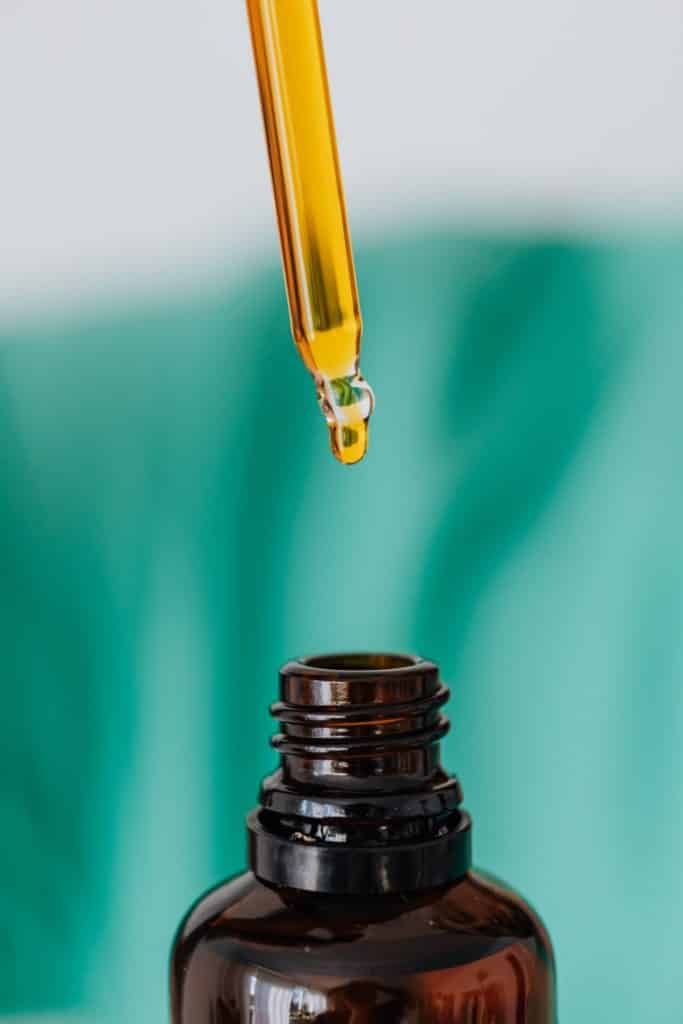The Main Dates Concerning “Omnibus IV”
The European Commission has notified the draft regulation “OMNIBUS IV” to the World Trade Association (WTO) on the 22nd January 2021. This proposal was open to comments until the end of March and is supposed to enter into force on March 1st, 2022.
The next step consists in the publication of the final regulation, which should be issued in the coming months.
Who is Affected by this Regulation

We remind you that, in the specific case of omnibus regulations, the date of entry into force applies to cosmetics put on the market and to cosmetics already on the market as well. Cosmetic products on the EU market that would contain the below ingredient after the date of entry into force would become illegal in the EU and must be withdrawn from the EU market.
Main impacts this regulation will have on cosmetic products are:
- BUTYLPHENYL METHYLPROPIONAL CAS N° 80-54-6 (a.k.a. Lilial®, Lysmeral®,…) will be banned from the 1st of March 2022 as expected (see IL-064).
- ZINC PYRRITHIONE CAS n° 13463-41-7 will be deleted from annexes III and V and added to annex II – list of prohibited substances in cosmetics. The application deadline will not be extended as previously expected. The ban will be effective from the 1st of March 2022. Zinc pyrrithione is currently authorized as a preservative up to 1% in rinse-off hair products, 0.5% in other rinse-off products excluding oral products (annex V/8), and as an anti-dandruff agent in leave-on hair products up to 0.1% (annex III/101). As per Article 15(2) of Regulation (EC) No 1223/2009, substances classified as CMR substances of category 1A or 1B may be used in cosmetic products by way of exception assuming that the substance has been evaluated and found safe by the Scientific Committee on Consumer Safety (SCCS) AND that no suitable alternative substances are available. The safe use as an anti-dandruff at max 1% in rinse-of hair products was confirmed by the SCCS in its opinion of March 2020. However, it was considered that there are suitable alternative substances available with regard to anti-dandruff ingredients. For this last reason, Zinc Pyrithione will be banned.
- SODIUM HYDROXYMETHYLGLYCINATE CAS n° 70161-44-3 will be added in the annex II and therefore banned from cosmetic products as from March1st, 2022. It is currently authorized as preservative up to 0.5% (annex V/51)
20 other substances will be prohibited in cosmetics, and added in the annex II, with the same implementation date on March 1st, 2022. You will find the list of these 20 ingredients in the table below.
| Substances | Cas number | EC number |
|---|---|---|
| Silicon carbide fibres (with diameter < 3 μm, length > 5 μm and aspect ratio ≥ 3:1) | 409-21-2 308076-74-6 | 206-991-8 |
| Tris(2-methoxyethoxy) vinylsilane; 6-(2-methoxyethoxy)- 6-vinyl-2,5,7,10-tetraoxa-6-silaundecane | 1067-53-4 | 213-934-0 |
| Dioctyltin dilaurate; [1]stannane, dioctyl-, bis (coco acyloxy) derivs. [2] | 3648-18-8 [1]91648- 39-4 [2] | 222-883-3 [1]293-901-5 [2] |
| Dibenzo[def,p]chrysene; dibenzo[a,l]pyrene | 191-30-0 | 205-886-4 |
| Ipconazole (ISO); (1RS,2SR,5RS;1RS,2SR,5SR)-2-(4-chlorobenzyl)-5-isopropyl-1- (1H-1,2,4-triazol-1-ylmethyl)cyclopentanol | 125225-28-7 115850-69-6 115937- 89-8 | – |
| Bis(2-(2-methoxyethoxy)ethyl)ether; tetraglyme | 143-24-8 | 205-594-7 |
| Paclobutrazol (ISO); (2RS,3RS)-1-(4-chlorophenyl)-4,4-dimethyl- 2-(1H-1,2,4-triazol-1- yl)pentan-3-ol | 76738-62-0 | – |
| 2,2-bis(bromomethyl) propane-1,3-diol | 3296-90-0 | 221-967-7 |
| Diisooctyl phthalate | 27554-26-3 | 248-523-5 |
| 2-methoxyethyl acrylate | 3121-61-7 | 221-499-3 |
| Flurochloridone (ISO); 3-chloro-4-(chloromethyl)-1-[3-(trifluoromethyl)phenyl]pyrrolidin-2-one | 61213-25-0 | 262-661-3 |
| 3-(difluoromethyl)-1- methyl-N-(3′,4′,5′-trifluorobiphenyl-2-yl) pyrazole-4-carboxamide; fluxapyroxad | 907204-31-3 | – |
| N-(hydroxymethyl)acrylamide; methylolacrylamide; [NMA] | 924-42-5 | 213-103-2 |
| 5-fluoro-1,3-dimethyl-N-[2-(4- methylpentan-2-yl) phenyl]-1H-pyrazole- 4-carboxamide; 2′- [(RS)-1,3-dimethylbutyl]-5-fluoro-1,3-dimethylpyrazole-4-carboxanilide; penflufen | 494793-67-8 | – |
| Iprovalicarb (ISO); isopropyl [(2S)-3- methyl-1-{[1-(4- methylphenyl)ethyl] amino}-1-oxobutan-2- yl]carbamate | 140923-17-7 | – |
| Dichlorodioctylstannane | 3542-36-7 | 222-583-2 |
| Mesotrione (ISO); 2-[4-(methylsulfonyl)- 2-nitrobenzoyl]-1,3- cyclohexanedione | 104206- 82-8 | – |
| Hymexazol (ISO); 3-hydroxy-5-methylisoxazole | 10004- 44-1 | 233-000-6 |
| Imiprothrin (ISO); reaction mass of: [2,4- dioxo-(2-propyn-1-yl) imidazolidin-3-yl] methyl(1R)-cis-chrysanthemate; [2,4-dioxo-(2-propyn-1-yl) imidazolidin-3-yl] methyl(1R)-trans-chrysanthemate | 72963-72-5 | 428-790-6 |
| Bis(α,α-dimethylbenzyl) peroxide | 80-43-3 | 201-279-3 |
Biorius can help you to cope with the challenging and fast-moving regulatory environment and keeps you updated on the compliance status of your portfolio.
Don’t hesitate to contact us for more info.
(Author: Ms. Stephanie Annet)
To see the other posts about the regulation “Omnibus”, please click here.


